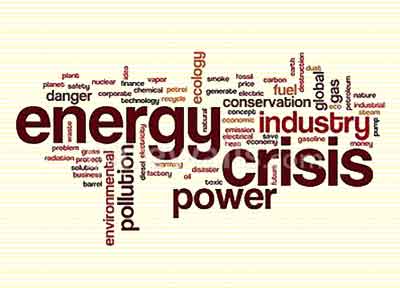The Truth About The Energy Crisis That No One Wants To Acknowledge
Haley Zaremba
 As the 27th United Nations Climate Change Conference continues its second week of meetings, talks, and events in Sharm el Sheikh, Egypt, big energy deals are being made and futuristic decarbonization plans are being laid. Despite the fanfare, however, some of the simplest and most immediate solutions are those that require the least wheeling and dealing. As unsexy and un-marketable as it is, energy efficiency remains one of the most important and most under-attended pieces in the climate crisis puzzle. As the World Economic Forum wrote last week in a report from the sidelines of COP27, “the greenest energy is the energy we don’t use.” The renewable revolution is well underway, costs of solar and wind technologies are now competitive with fossil fuels, and around the world we are breaking record after record for clean energy capacity installation. But even all that progress can’t keep up with growing energy demand around the world. For as much decarbonized energy as we are able to add year over year, this is doing very little to actually displace energy created from fossil fuels – as of now, 80% of the United States energy mix still comes from fossil fuels. As energy use continues to grow overall, we are still a long way from being able to wean ourselves off of fossil fuels entirely. As the 27th United Nations Climate Change Conference continues its second week of meetings, talks, and events in Sharm el Sheikh, Egypt, big energy deals are being made and futuristic decarbonization plans are being laid. Despite the fanfare, however, some of the simplest and most immediate solutions are those that require the least wheeling and dealing. As unsexy and un-marketable as it is, energy efficiency remains one of the most important and most under-attended pieces in the climate crisis puzzle. As the World Economic Forum wrote last week in a report from the sidelines of COP27, “the greenest energy is the energy we don’t use.” The renewable revolution is well underway, costs of solar and wind technologies are now competitive with fossil fuels, and around the world we are breaking record after record for clean energy capacity installation. But even all that progress can’t keep up with growing energy demand around the world. For as much decarbonized energy as we are able to add year over year, this is doing very little to actually displace energy created from fossil fuels – as of now, 80% of the United States energy mix still comes from fossil fuels. As energy use continues to grow overall, we are still a long way from being able to wean ourselves off of fossil fuels entirely.
Scaling up solar and wind takes time. There is a lot of logistical hurdles, inertia, and plain resistance built into the current energy system. But using less energy to do the same tasks is attainable right now, and could make an enormous difference in the global carbon footprint. According to the International Energy Agency (IEA), accelerated and intensified action on energy efficiency and energy avoidance could cut a whopping 95 exajoules of final energy demand in 2030. For reference, that is about the same as the final energy consumption of China – the largest energy consumer in the world.
And a great deal of this energy saving starts with you and your thermostat. The financial and energy cost of heating and cooling has been getting more media attention this year as the European energy crisis has put the squeeze on local homes and businesses trying to keep their homes and buildings at a relatively liveable temperature without breaking the bank. But it isn’t just Europeans who need to be paying more attention to their thermostat. The temperature of your home is now cause for global concern.
So what is the right temperature to keep your family healthy while keeping your energy bill small? Lucky for us, there is a direct answer to this question. According to the United States Department of Energy, your house should be 68 degrees Fahrenheit in the winter and 78 degrees in the summer during the daytime. During those cold winter nights, you can actually turn the heat down even further. When we sleep, our body temperature naturally drops. Ideal sleeping temperatures are, therefore, between 60 and 67 degrees. Furthermore, for maximum efficiency, you should designate 8 hours a day (such as when you leave to go to work) to turn your thermostat down by 7 to 10 degrees. According to the Energy Information Administration (EIA), doing so will cut your yearly energy expenditures by up to 10%.
While a long, cold winter is currently looming large in the global imagination, cooling will be much more of a global energy concern as average temperatures grow higher, particularly in the global south. According to the World Economic Forum, “space cooling accounted for nearly 16% of the total electricity used in buildings, or about 2,000 terawatt hour (TWh) of final electricity consumption in 2021.” And going forward, those figures are only going to increase. IEA projections forsee that energy demand for space cooling in buildings around the world could more than triple by 2050.
While highly efficient cooling systems are already available on the market, these are severely underutilized. Indeed, most models in use have two-to-three times lower efficiencies than the best available technologies. The World Economic Forum points to energy efficiency standards as a critical policy tool to help address this gap. Such standard setting is an outcome that many experts hope to see from COP27 this week.
By Haley Zaremba for Oilprice.com
.

Haley Zaremba is a writer and journalist based in Mexico City. She has extensive experience writing and editing environmental features, travel pieces, local news in the Bay Area, and music/culture reviews.
oilprice.com
|
![[Most Recent Quotes from www.kitco.com]](http://www.kitconet.com/images/live/s_gold.gif)
![[Most Recent USD from www.kitco.com]](http://www.weblinks247.com/indexes/idx24_usd_en_2.gif)
![[Most Recent Quotes from www.kitco.com]](http://www.kitconet.com/images/live/s_silv.gif)


